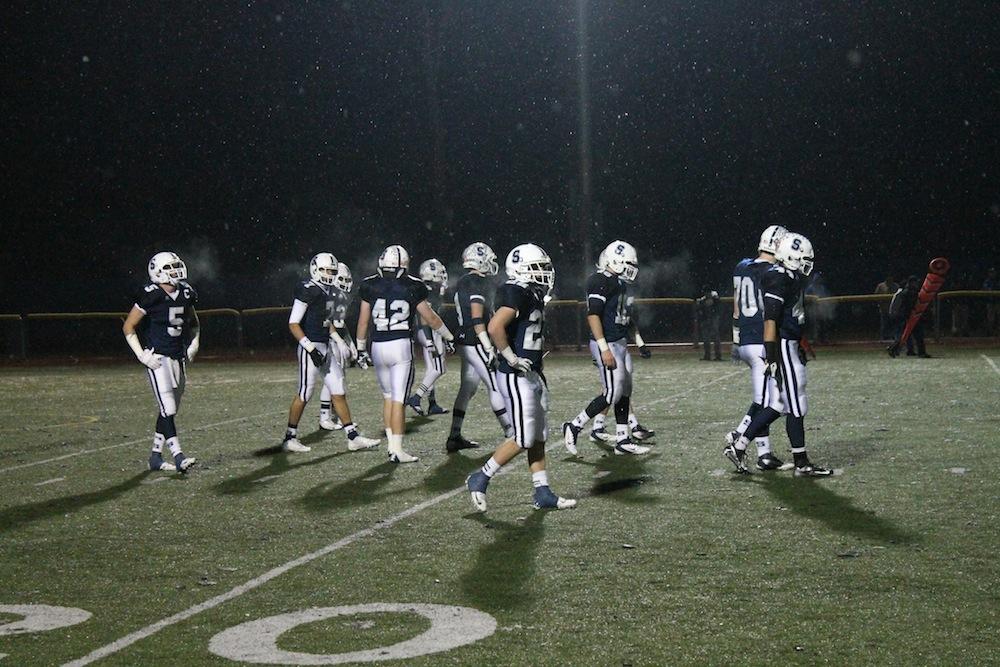The sound of the tennis ball coupled with labored breathing and rapid footsteps echoes throughout the court as two opposing tennis players compete fiercely against one another. Individuals can rely only on themselves; the outcome of the match rests completely in their hands.
When a teammate is thrown in the mix, the whole dynamic changes.
“The major difference between singles and doubles is that in singles you have to depend on yourself for motivation, strategy, and emotional support,” said Melissa Beretta ’14, a girls’ varsity player. “In doubles you have another person that can pump you up when you are upset, help you when you are stumped for how to beat a certain team, and calm you down when you, as almost all tennis players do, freak out and get dangerously close to having your game break down.”
Doubles involves two teams of two, one pair on each side of the net, competing against each other to win a match. Having another teammate on the court spurs the strategy, teamwork, and most importantly, communication.
“It is crucial that you learn to get along with your partner and that you combine your strengths to be the best doubles team you can be,” said Nicole Marcante ’12, a second doubles player on the girls’ varsity team.
Luke Foreman ’14, also a second doubles player but on the boys’ varsity team, agrees.
“If you can’t get along or effectively talk with your partner throughout the match, the game becomes much more difficult,” he said.
Jake Hirschberg ’13, a boys’ varsity player who received All State in doubles and All FCIAC in singles last year, describes the most common communication error between partners.
“It can be difficult because if a ball is hit in between you and your partner, you don’t have very much time to decide who is going to hit it,” Hirschberg said.
A similar event occurred between Foreman and his partner, Steve Thomson ’12, during the last match of their undefeated season. Staples was tied 3-3, and their match would be the deciding factor.
“Both Steve and I were really nervous, and I remember that during one of the first points we played, a routine ball was hit down the middle, and we both left it, anticipating that our partner was there,” Foreman said. “We were both extremely embarrassed, and if it weren’t for the support of each other, who knows how the match could have turned out.”
Foreman and Thomson were able to pull through and win the match, which Foreman attributes to their positive attitude throughout the game. “On match point, I was scared but ended up hitting the winning volley. Steve and I both jumped about three feet in the air, elated and relieved,” Foreman said. “It was much more fun to win with a partner, and knowing that all the weight wasn’t on my shoulders also took a lot of the pressure off.”
Not only must doubles players adjust to each other’s presence on the court, they also have to adapt different strategies in order to be successful. Some of the most popular ones include placing two players on the baseline, placing one player back at the baseline and the other up at the net, or placing both players at the net. “These formations give the team different angles and shot options, and depending on the situation, they can each be very effective,” Beretta said.
Once the players are set up in one of these positions, the game mostly consists of serves and volleys. Foreman takes advantage of this type of hit and positions both himself and his teammate at the net.
“It’s the most effective strategy, especially on fast courts,” Foreman said. “When two people are at the net, it becomes much harder for the other team to get the ball by, so as long as there are good volleys, it tends to be pretty successful.”
Although playing with another person is tough, working hard to cooperate together can be very rewarding.
“With their skill and ability to communicate on the court, high level doubles players will blow you out of the water,” Beretta said.














































